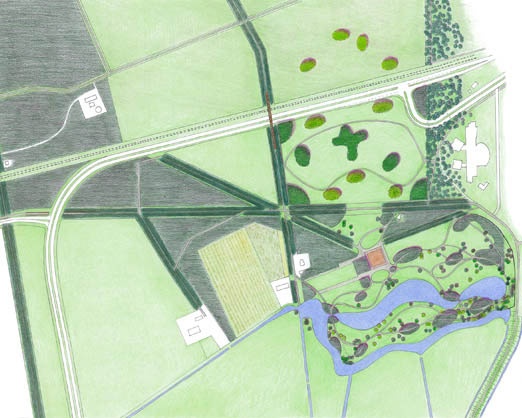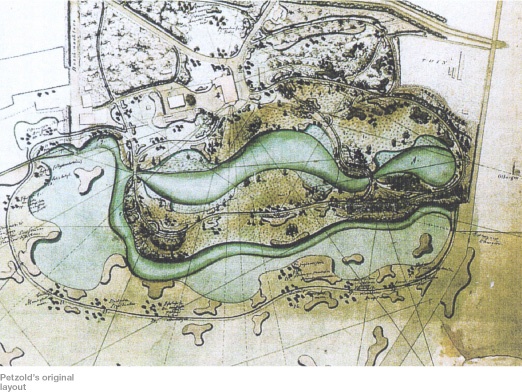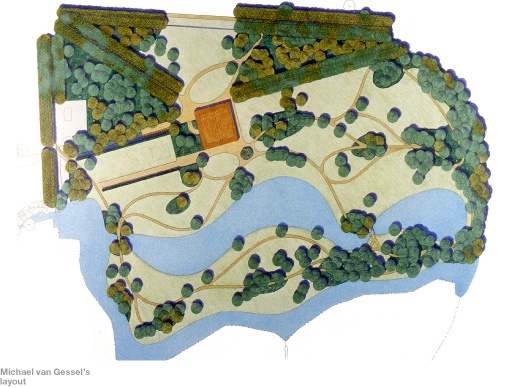

In Dutch, ‘hof’, like ‘court’ in English, means both, ‘house’ and ‘garden’. The Hof te Dieren originally featured both: a stately home facing a garden laid out in the English landscape style. The house was destroyed in the Second World War. The park survived but suffered from benign neglect. For the trained eye, its allure was still visible through the abundance of uncontrolled growth.
The landscape design was by J.D. Zocher jr. He transformed the rectangular fishing ponds of the previous formal garden into a languidly flowing arm of a river. Land and water intertwine and interact in perfect balance. What looks like a pond between inclined planes, narrows, turns a corner and changes into a curvilinear canal surrounding an island. Clumps of trees and shrubs add to the excitement of experiencing a constantly changing panorama.

In the late 19th century the German landscape architect Petzold, who also worked at Twickel produced a design for Hof te Dieren. Although this scheme also included the Zocher layout, only his proposals for the surrounding area were realized.

Water
Restoration of the park was based on the existing shapes of the bodies of water, surrounded by the relief with surviving groups of monumental trees. Shrubbery that cluttered the grounds has been removed to create vistas and open space.
Paths
Undulating sandy paths that follow the contour of the landscape are repaired. They are essential to experience the depth and sequence of softly sloping meadows between the water edge and top of the relief.
Undergrowth
Undergrowth is reduced to a couple of massive bushes of mainly hardy annuals. They strengthen the relief thereby presenting visitors, strolling along the paths, the suspense and surprise that mark this style of landscaping.
House
Finally there is the house. Or rather, there isn’t. The center where all vistas were focused upon, from which the landscape design emanated, is sorely missed. It might be possible to rebuild the house, preferably in a contemporary manner, but respecting the characteristics of the original – a building with a base, a middle with windows and a prominent roof plane.
Client
Twickel Foundation